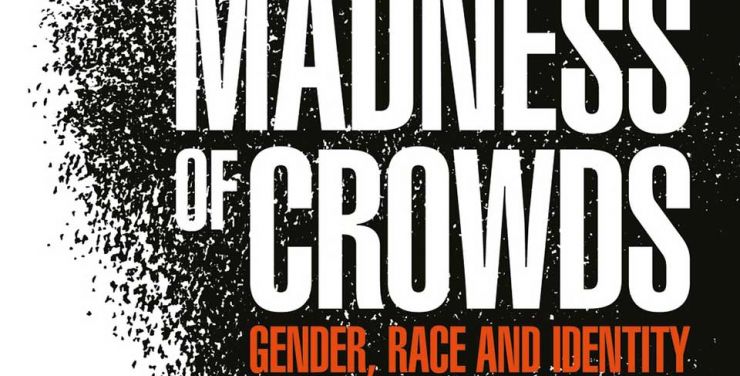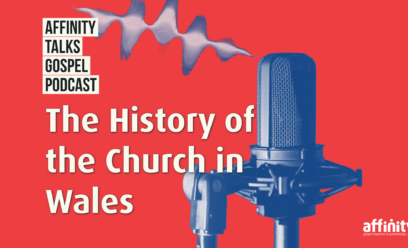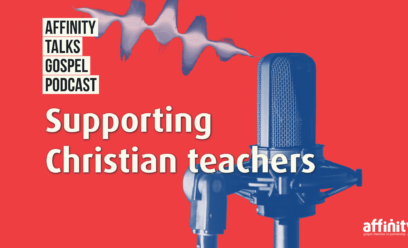Book review: The Madness of Crowds

The latest issue of Affinity’s Social Issues Bulletin is out now. It is free to download, as are all previous editions.
One of the articles is a review of a very important recent book by Douglas Murry. Tim Dieppe, Head of Public Policy at Christian Concern, writes for us:
Book review: The Madness of Crowds
The Madness of Crowds, Douglas Murray, Bloomsbury Continuum, 288pp, (2019) £12.75 (Amazon)
Best-selling author, journalist and political commentator Douglas Murray has written a new book which discusses various problems with the way our culture has developed. It is an important analysis and critique of various aspects of contemporary society, touching on subjects that many shy away from talking about. Murray is straight-talking and blunt: Contemporary culture is riddled with serious problems that stem from our abandonment of Christian values and morality; we are on the path to destruction. While Murray’s diagnosis is clear, he offers no solutions. The challenge for Christians is to boldly proclaim our need to recover a biblical vision for society. This is the only solution to our mounting problems.
The sceptical society
Douglas Murray begins his new book with an apposite quote from G.K. Chesterton: “The special mark of the modern world is not that it is sceptical, but that it is dogmatic without knowing it.” Murray’s thesis, which few can really disagree with, is that “We are going through a great crowd derangement” (1). People are becoming “increasingly irrational, feverish, herd-like and simply unpleasant” (1). You only need to have watched anything about politics in the last few weeks to know what he is talking about.
Why has this happened? Murray is clear. He lays the blame firmly at the foot of postmodernism which entails suspicion towards all grand narratives. Christianity, which provided the moral and philosophical foundations for western civilisation, is now regarded with suspicion or even hostility. No credible alternative has stepped in to replace it. We are therefore left with no answers to the obviously pressing question of what life is for.
Identity politics
Into this moral and spiritual vacuum comes identity politics, proposing to interpret the world through the lens of victimhood, the assumption being that victims have “a heightened moral knowledge” (3). People feel unable to contradict someone who prefaces what they say with “Speaking as a…” The more of a victim you are, the more your views should be respected. If you don’t respect the views of such victims then you are written off and slandered as “bigoted”, “sexist”, “racist”, “homophobic”, “transphobic”, “Islamophobic” etc. Yet somehow, all these intimidating and bullying insults don’t qualify you for victim status. Rather, once you have stumbled over one of these “freshly laid tripwires” (7) as Murray describes them, you are written off and disqualified from the debate.
These tripwires can be lethal for your career, as many of our clients have discovered to their cost. If you land on the wrong side of the victim narrative you are, somewhat perversely, victimised without mercy. Murray’s book consists primarily of four long chapters covering the shibboleth topics of Gay, Women, Race and Trans. These are topics that are not open for discussion in our society. They are laden with tripwires; Murray has decided that it is his job to expose them.
Gay
The fact that Murray is himself openly gay makes this chapter all the more powerful as he criticises our inability to discuss the issues openly. One key theme of the book is the concept of “hardware versus software”. If sexual orientation is genetically determined, this would make it a hardware issue in Murray’s terminology. If it is purely a lifestyle choice, then it is a software issue. The gay lobby is keen to portray homosexuality as a hardware issue as this gives them victim points. If, on the other hand, it is a software issue, then they lose victim status. Sadly for the gay lobby, there is no hard evidence of sexuality being a hardware issue. Murray surveys the evidence and concludes we just don’t know. (I think the evidence is rather more conclusive than that.)
Murray then goes on to distinguish between “gays” and “queers”. He defines “gays” as those who just want to live their homosexual lifestyle and be left alone. “Queers”, on the other hand, are activists who want to destroy traditional concepts like marriage and the family. Murray agrees that we have gone beyond acceptance of homosexuality to celebration as a society. But he recognises the “moral blackmail” that this sometimes entails (41). You can be called a bigot for suggesting that two men cannot make a baby these days (42). Truth is a serious casualty here. This is also insulting to women, without whom no babies are made, but the new morality is full of such contradictions.
Cultural Marxism
Murray has an interlude on “The Marxist Foundations” which very clearly explains how economic Marxism, which saw the working class as the victims, has morphed into cultural Marxism whereby the victims are sexual minorities, racial minorities, women and various other groups. The flip side of this is that white, heterosexual males can never be victims and should rather feel guilt and shame for “white privilege”. The fact that fake academic papers, carefully checked by the authors to ensure that they say nothing meaningful, have been accepted in peer-reviewed academic journals shows how far this nonsense has permeated academia. As Murray says, much of academia these days is not interested in discovery and dissemination of the truth. Instead the purpose has become the propagandisation of cultural Marxism. This is not academia, but activism (59).
Women
Murray explains how we have moved from first wave feminism – the campaign for legal rights – to third or fourth wave feminism, where men as seen as the problem or even the enemy. The way feminism has moved has resulted in what he calls “an impossible demand” (80). Women must be allowed to be as sexy and sexual as they please, but then can never be sexualised. The other paradox of modern feminism is that it insists that women are as good as men at everything, but at the same time better than men at some things. Men are blamed for all the problems in the world, the assumption being that women would naturally do a better job. Everyone is supposed to just sit and swallow paradoxes like this on pain of being called sexist.
Many major corporations have instituted compulsory “unconscious bias training” (88). This is problematic because there is no way of proving that you don’t have unconscious bias. You are assumed guilty by default. Furthermore, the evidence is that tests of such bias are unreliable and measures to counter “unconscious bias” do not work. Pressure on companies to publish pay differences has resulted in absurdities such as an employee being asked if she (I assume female from what follows) would accept a higher salary so as to help satisfy the gender and racial salary quotas in the organisation (92)! The other paradox with such quotas is that the minority people that benefit from such quotas are often some of the most privileged people in society (93). So who is this really working for?
Race
I found this the most disturbing chapter. Many universities now offer courses on “whiteness studies”. Whereas “black studies” look at the positive contribution of black people to culture and history, “whiteness studies” is aimed at “problematising whiteness” (124). Of course, “problematising whiteness” means “problematising white people” which is actually racist (126). Nevertheless, hundreds of British academics have had to attend “white privilege” workshops which explain that their skin colour makes them racist even if they don’t recognise it (127).
Murray has some very disturbing stories about how white academics in US universities have been hounded out by mob rule. People are told that they are not allowed to speak because they are white (131). Since his book was published, Edinburgh University has attracted criticism for hosting an event where white people will not be allowed to ask questions. This is blatant racism.
It gets worse. In some of this dialogue, the concept of “objective truth” is presented as a construct of the Euro-West, and therefore a racist concept (136). In such a mindset, facts and arguments are expressions of racist oppression. Nothing will persuade such people. We are in the land of mob rule where might is right.
Murray explains that the western concept of “equality” was rooted in Christian ideas of all people having equality in the eyes of God (168). Once we abandon God, this moves to equality in the eyes of man. But equality of looks, or gifts, or experience, or knowledge, or wealth is impossible to achieve. Even equality of opportunity is impossible. Should we ban parents from reading to their children because it gives them an unfair advantage? We are living in a world where most people are striving for impossibilities and making impossible demands along the way.
Forgiveness
Murray has an interlude on forgiveness in which he helpfully articulates that one of the problems of the internet age is that we have not learnt how to forgive. The internet never forgets, and one consequence of this is that people never forgive what was said – no matter how long ago it was. Humans are by nature fallible. We can’t undo what we have done. We all need forgiveness, without which we can be paralyzed by our mistakes. With the internet, Murray says,
“We have created a world in which forgiveness has become almost impossible, in which the sins of the father can certainly be visited upon the son. And we remain remarkably unconcerned to create any mechanisms or consensus over how to address the resulting conundrum.” (182)
Murray laments the loss of the Christian emphasis on forgiveness. It is striking to see an atheist perceive and explain this problem with which Christians would wholeheartedly agree.
Trans
Murray begins this chapter by saying:
“Every age before this one has performed or permitted acts that to us are morally stupefying… It is worth wondering what the blind spots of our age might be.” (184)
He relates the story of Nancy Verhelst who was euthanised a year after her last sex change procedure. He imagines future generations wondering: “So the Belgian health service tried to turn a woman into a man, failed and then killed her?” (185).
Murray discusses intersex, autogynephilia and gender dysphoria. The discussion is interspersed with stories and anecdotes which bring it to life. Some of these are heart-rending accounts of trans-regret people who now say they were uncritically placed on a conveyor belt for treatment. Parents are told that “parental acceptance is the first step to prevent suicide” (221). This is nothing less than emotional blackmail. Children make use of this type of manipulation too – “Let me change gender or I’ll kill myself” (222). What this means is that the slightest discussion or questioning of what is best is effectively silenced or condemned. Yet treatment is irreversible; surely serious discussion and questioning should be a requirement before we engage in something like that? Since the book was published it has been reported that hundreds of young trans people want help to detransition. The evidence that we are getting this wrong is mounting.
Meanwhile a lot of people are getting hurt.
So what can we do?
Murray’s concluding chapter has some ideas about how to respond to all this. Part of what to do is to point out the contradictions in contemporary culture – of which there are many. One is that the countries most advanced in equality and human rights are presented as the worst offenders (232). Another is why people who accept transgenderism will not accept transracialism? (234) Should we really allow men (who identify as female) to beat up women in martial arts? (237).
Then there are the facts that contradict the narratives. Did you know that gay men and lesbian women consistently earn more on average than their heterosexual counterparts? (242). Does this make heterosexuals victims of discrimination? In America Asian men earn higher than any other group? (242) Should something be done about this?
There is also some myth-busting to do. One is the myth of the “noble savage” which is based on a rejection the doctrine of original sin and which is contradicted in history (250). Another is the myth of the virtuous victim. Victims are not always right; it is a perverse culture that idealises victimhood rather than heroism or stoicism (252).
Pointing out contradictions and problems like this will help some people. Murray is convinced, however, that the cultural Marxist element is not really interested in truth or problem solving. Their analysis is “expressed not in the manner of a critic hoping to improve, but as an enemy eager to destroy. There are signs of this intention everywhere we look.” (245)
In Murray’s words:
“Their desire is not to heal but to divide, not to placate but to inflame, not to dampen but to burn.” (247)
If you can make people doubt absolutely everything – even that there is such a thing as men or women – you can destroy society.
Conclusion
Murray’s book is essential reading for anyone who wants to understand contemporary culture. Murray diagnoses and explains the problems we face with great skill and clarity. He recognises that abandoning Christianity has left us without a moral framework or narrative purpose for society. This is deeply problematic and has landed us on the road to destruction. He has no alternative to offer though. The fact is that the only real answer is a return to Christian morals and values. In his heart I suspect that Murray realises this but doesn’t want to go there; this is too challenging for his lifestyle. Even so, he advocates Christian ideals like forgiveness and generosity.
As Christians we need to step up and boldly proclaim that Christianity has the answers and the explanations. The evident contradictions and paradoxes of the alternatives present a clear opportunity for the gospel. God is the foundation for objective truth about sexual ethics, race, gender and much more. Biblical morality sets people free and has none of the contradictions that Murray highlights. People are hungry for purpose, acceptance and forgiveness. All of these can only really be found in God. The harvest is ripe. We just need more workers.
Tim Dieppe
(This article was originally published in the Affinity Social Issues Bulletin for November 2019. The whole edition can be found at www.affinity.org.uk)
Stay connected with our monthly update
Sign up to receive the latest news from Affinity and our members, delivered straight to your inbox once a month.



